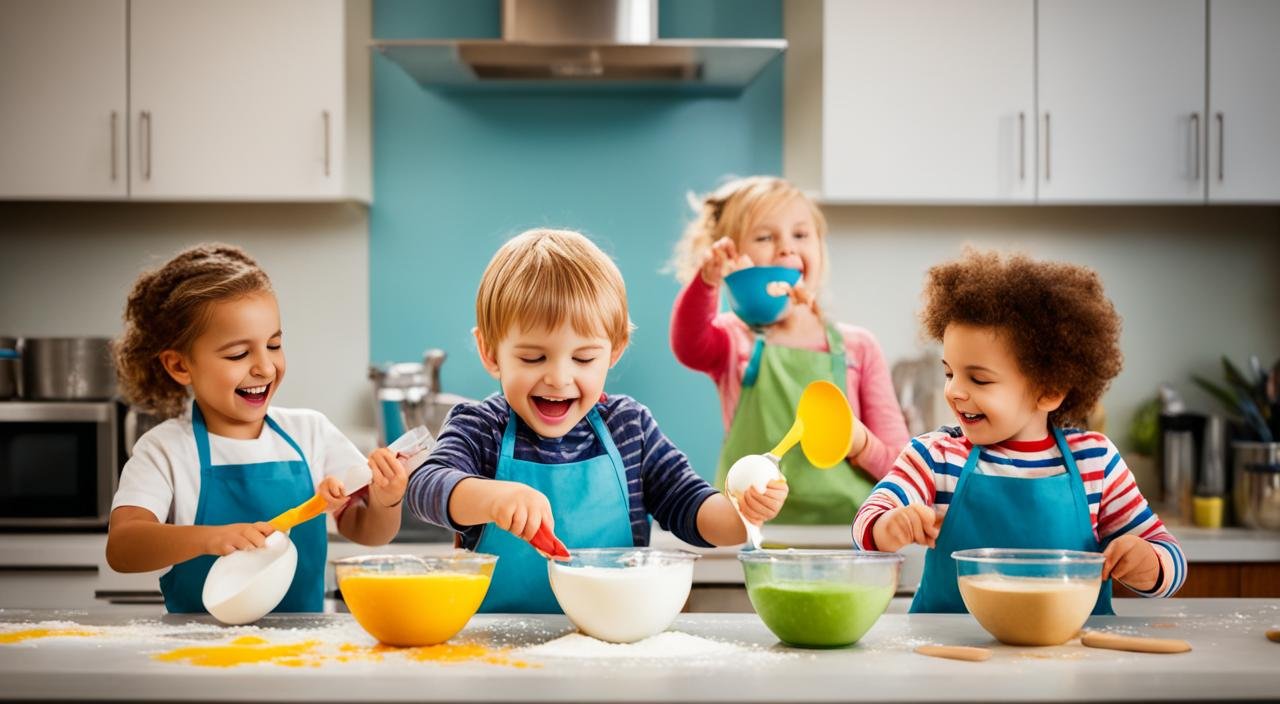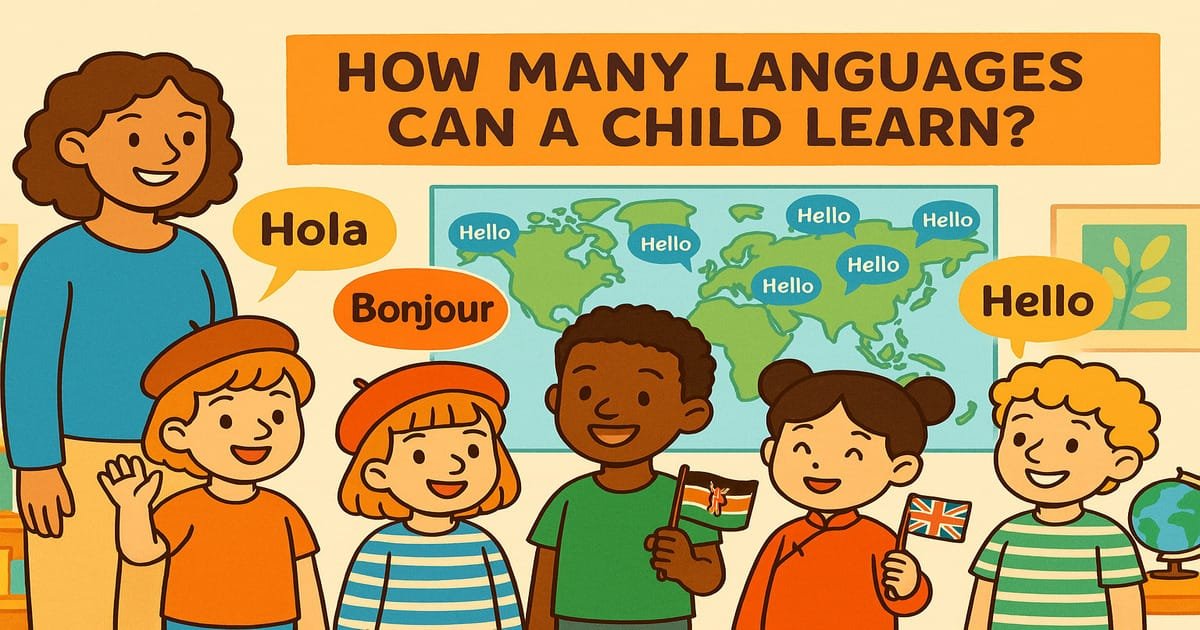Do you remember the first time you stepped into the kitchen? The aroma of freshly baked cookies filling the air, the joy of mixing ingredients, and the anticipation of tasting your creation—it was a magical experience. Imagine passing on that enchantment to your own children. Wondering how to teach kids to cook? Teaching kids to cook not only imparts crucial life skills but also creates lasting memories and cultivates their creativity.
As parents, we want our children to grow up to be independent, confident individuals. By involving them in the culinary arts from a young age, we can instill a sense of empowerment and accomplishment, while also providing quality family time. So, let’s dive into the world of cooking with our little ones and embark on an exciting journey that will shape their future.
Key Takeaways:
- Teaching kids to cook empowers them with valuable life skills and fosters creativity.
- Involving children in cooking provides quality family time and strengthens bonds.
- Start with simple tasks suitable for their age and skill level, and gradually increase complexity.
- Teaching kitchen safety is crucial to ensure a safe and enjoyable learning experience.
- Encourage your children’s culinary creativity and give them the freedom to add their own twist to recipes.
Benefits of Teaching Kids to Cook
Teaching kids to cook offers numerous benefits. It helps them develop a sense of ownership over their meals and encourages them to try different foods. Cooking at home promotes healthier eating habits and gives children a better understanding of nutrition. It also provides an opportunity for learning, as cooking touches on various subjects like culture, history, math, science, and health. By involving children in the kitchen from a young age, you are setting them up for a lifetime of healthy eating and culinary enjoyment.
Here are some key advantages of teaching kids to cook:
- Ownership over meals: When children learn to cook, they gain a sense of responsibility and pride in creating their own meals. This empowerment over their food choices can lead to healthier eating habits and a greater appreciation for nutritious ingredients.
- Expanding their palate: Cooking exposes children to a variety of flavors, textures, and ingredients. By experimenting with different recipes and ingredients, kids can develop a more adventurous palate and become more open to trying new foods.
- Learning about nutrition: Through cooking, children gain a deeper understanding of the nutritional value of different foods. They can learn about the importance of balanced meals, portion sizes, and the benefits of eating a variety of fruits, vegetables, proteins, and grains.
- Developing life skills: Cooking teaches kids essential life skills such as following instructions, measuring ingredients, and problem-solving. They also learn valuable skills like time management, organization, and creativity.
- Exploring various subjects: Cooking is not just about food; it encompasses various subjects like culture, history, math, science, and health. Children can learn about different cuisines, the origins of dishes, measurements, chemical reactions during cooking, and the impact of food on our bodies.
By involving children in cooking activities, you are providing them with a fun, educational, and enriching experience that sets the foundation for a lifetime of healthy eating, culinary exploration, and a passion for learning.
Creating a Positive Learning Environment
When teaching kids to cook, it’s important to create a positive learning environment that fosters their curiosity and creativity. This includes:
- Encouraging their input: Let children have a say in choosing recipes, ingredients, and flavors. This helps nurture their creativity and gives them a sense of ownership in the cooking process.
- Making it a family affair: Cooking together as a family establishes a bond and creates lasting memories. It’s an opportunity to spend quality time together and learn from one another.
- Providing constructive feedback: Offer praise and constructive feedback to boost your child’s confidence and encourage their growth. Highlight their accomplishments and give them guidance on areas to improve.
- Maintaining a safe and clean kitchen: Teach children about kitchen safety, including proper handling of utensils, appliances, and hot surfaces. Reinforce the importance of washing hands, using cutting boards for different ingredients, and keeping work areas clean.
By creating a supportive and positive learning environment, you can help your children develop a love for cooking while building their culinary skills and confidence.
Tips for Teaching Kids to Cook
When it comes to teaching kids to cook, starting with easy recipes and age-appropriate activities is key to building their confidence and fostering a love for cooking. By gradually introducing more complex tasks and emphasizing kitchen safety, you can create a fun and engaging experience for your little chefs. Let’s explore some tips to make cooking with kids a breeze!
1. Start Small and Simple
Begin with basic tasks such as stirring, washing vegetables, and measuring ingredients. Younger children can enjoy these activities and feel a sense of accomplishment by contributing to the meal. Older kids can take on more challenging tasks like chopping produce or assisting with more complex recipes. Remember to be patient and guide them through each step to ensure their success.
2. Teach Kitchen Safety
Kitchen safety is paramount when cooking with kids. Take the time to teach them about handling knives, hot surfaces, and electrical appliances with caution. Reinforce the importance of washing hands before and after handling food, and have a designated area for safe food preparation. By instilling good habits from the start, you’ll help them become confident and responsible cooks.
3. Encourage Creativity
Allow your kids to add their own twist to recipes and encourage their culinary creativity. This not only makes the cooking experience more enjoyable for them but also helps develop their taste preferences. Whether it’s experimenting with different spices, toppings, or presentation, let their imaginations run wild in the kitchen.
4. Make it an Interactive Experience
Cooking with kids is not just about following a recipe; it’s about creating lasting memories. Get them involved in meal planning and grocery shopping. Let them choose ingredients and help with meal preparation. Engage them in conversations about the different flavors, textures, and origins of the ingredients. By making it an interactive experience, you’ll foster their interest in food and cooking.
5. Celebrate Their Success
Don’t forget to celebrate your little chefs’ accomplishments! Display their creations at the table, take pictures, and share their dishes with family and friends. This recognition and praise will boost their confidence and inspire them to keep exploring their culinary skills.
Remember, cooking with kids is not just about the end result; it’s about the journey. Enjoy the messy moments, embrace the learning opportunities, and create cherished memories together in the kitchen.
| Tips for Teaching Kids to Cook | Benefits | Example Recipe |
|---|---|---|
| Start Small and Simple | Builds confidence | Homemade Pizzas |
| Teach Kitchen Safety | Promotes responsibility | Fruit Salad |
| Encourage Creativity | Fosters exploration | Decorated Cupcakes |
| Make it an Interactive Experience | Promotes learning | Burrito Bowls |
| Celebrate Their Success | Boosts confidence | Homemade Smoothies |
Creating a Positive Learning Environment

When it comes to teaching your children cooking skills, creating a positive learning environment is key. By instilling good hygiene practices, promoting organization, and providing a safe and supportive atmosphere, you can nurture your children’s love for cooking and empower them to become more confident in the kitchen.
Instilling Good Hygiene Practices
One of the first things you should teach your kids is the importance of good hygiene in the kitchen. Emphasize the need to wash their hands thoroughly before and after handling food to prevent the spread of germs and cross-contamination. Show them the proper way to wash their hands with soap and warm water, making it a fun and interactive activity.
Additionally, teach your children how to keep their work area clean and tidy. Encourage them to wipe down surfaces and utensils as they go, minimizing the risk of contamination and creating a clean and safe space for cooking.
Promoting Organization
A well-organized kitchen not only streamlines the cooking process but also teaches children valuable skills in planning and preparation. Show your kids where utensils and ingredients are kept and explain the importance of keeping everything in its place. By promoting organizational skills in the kitchen, you are teaching your children the foundations of efficiency and creating a more enjoyable cooking experience.
Providing a Safe and Supportive Atmosphere
Creating a safe and supportive atmosphere in the kitchen will help your children feel comfortable and confident as they learn to cook. Encourage them to ask questions and explore their creativity. Let them know that it’s okay to make mistakes, as cooking is a learning process. Offer support and guidance, providing constructive feedback that helps them improve their skills.
Remember, the goal is to make cooking a fun and enriching experience for your children. By instilling good hygiene practices, promoting organization, and fostering a safe and supportive environment, you are setting the stage for your children to develop lifelong cooking skills and a healthy relationship with food.
| Benefits of Creating a Positive Learning Environment | How to Achieve a Positive Learning Environment |
|---|---|
| 1. Builds confidence in the kitchen | 1. Teach good hygiene practices |
| 2. Encourages creativity and exploration | 2. Promote organization and cleanliness |
| 3. Fosters a love for cooking | 3. Provide a safe and supportive atmosphere |
“Cooking with kids is not just about ingredients, recipes, and cooking. It’s about harnessing imagination, empowerment, and creativity.” – Guy Fieri
Patience and Support
Teaching children to cook is a process that requires patience and support. It’s important to avoid overwhelming them with complicated recipes beyond their skill level and instead start with straightforward dishes. By allowing them to build confidence through achievable tasks, they will begin to develop a genuine interest in cooking.
One way to provide support is by offering positive reinforcement and constructive feedback. Encouraging their efforts and highlighting their progress will boost their morale and motivate them to improve their culinary skills. Remember, a little praise goes a long way in nurturing their love for cooking.
It’s crucial to keep in mind that learning to cook is a skill that takes time to develop. Each child learns at their own pace, so it’s essential to be patient and allow them the freedom to make mistakes. Mistakes are an essential part of the learning process, as they provide valuable lessons and opportunities for growth.
Teaching children to cook not only equips them with practical skills but also fosters their creativity and independence. By offering patience and support, you’re not only creating an enjoyable learning experience but also empowering them to become confident and capable in the kitchen.
Conclusion
Teaching your children to cook is an incredibly rewarding experience that not only strengthens the bond between you and your little ones but also equips them with invaluable life skills. By following the tips and guidelines discussed in this article, you can create a safe and enjoyable learning environment that inspires a love for cooking in your children that will last a lifetime.
Cooking together as a family provides quality time and allows your children to develop a sense of independence, creativity, and accomplishment. By involving them in the kitchen and teaching them basic cooking skills, you are giving them the tools to prepare nutritious meals and make healthy choices throughout their lives.
Encourage their culinary creativity, let them experiment with easy recipes for kids, and give them the freedom to express their own unique twists. As they gain confidence and experience, introduce more complex tasks and guide them through new culinary adventures.
So, grab those apron strings, roll up your sleeves, and embark on this delightful culinary journey with your little ones. Whether it’s baking cookies, whipping up a delicious pasta dish, or experimenting with different flavors, teaching children to cook is a wonderful way to create lasting memories, foster their curiosity, and empower them with lifelong skills. Enjoy the journey and happy cooking!
FAQ
Why is teaching kids to cook important?
Teaching kids to cook is important because it empowers them with independence, fosters creativity, and provides valuable life skills. It also promotes healthier eating habits, encourages trying new foods, and allows children to develop a sense of ownership over their meals.
How can teaching kids to cook benefit their development?
Teaching kids to cook benefits their development by giving them a better understanding of nutrition, promoting learning in various subjects, such as culture, math, science, and history, and instilling good hygiene practices. It also provides quality family time and equips children with confidence and knowledge in the culinary arts.
What tasks can kids start with when learning to cook?
When teaching kids to cook, start with age-appropriate activities like stirring, washing vegetables, and measuring ingredients for younger children. Older kids can try chopping produce and assisting with more complex recipes as they gain confidence and experience.
How can I create a positive learning environment in the kitchen?
To create a positive learning environment, teach your kids good hygiene practices like handwashing and keeping their work area clean. Encourage organization by showing them where utensils and ingredients are kept. Also, demonstrate kitchen safety by teaching them how to handle knives, hot surfaces, and electrical appliances with caution.
How should I handle mistakes when teaching kids to cook?
When teaching kids to cook, it’s important to allow them to make mistakes and learn from them. Avoid using negative comments or harsh criticism, and instead provide positive reinforcement and constructive feedback to boost their morale and motivate them to improve. Remember that cooking is a skill that takes time to develop, so be patient and let your children learn at their own pace.





